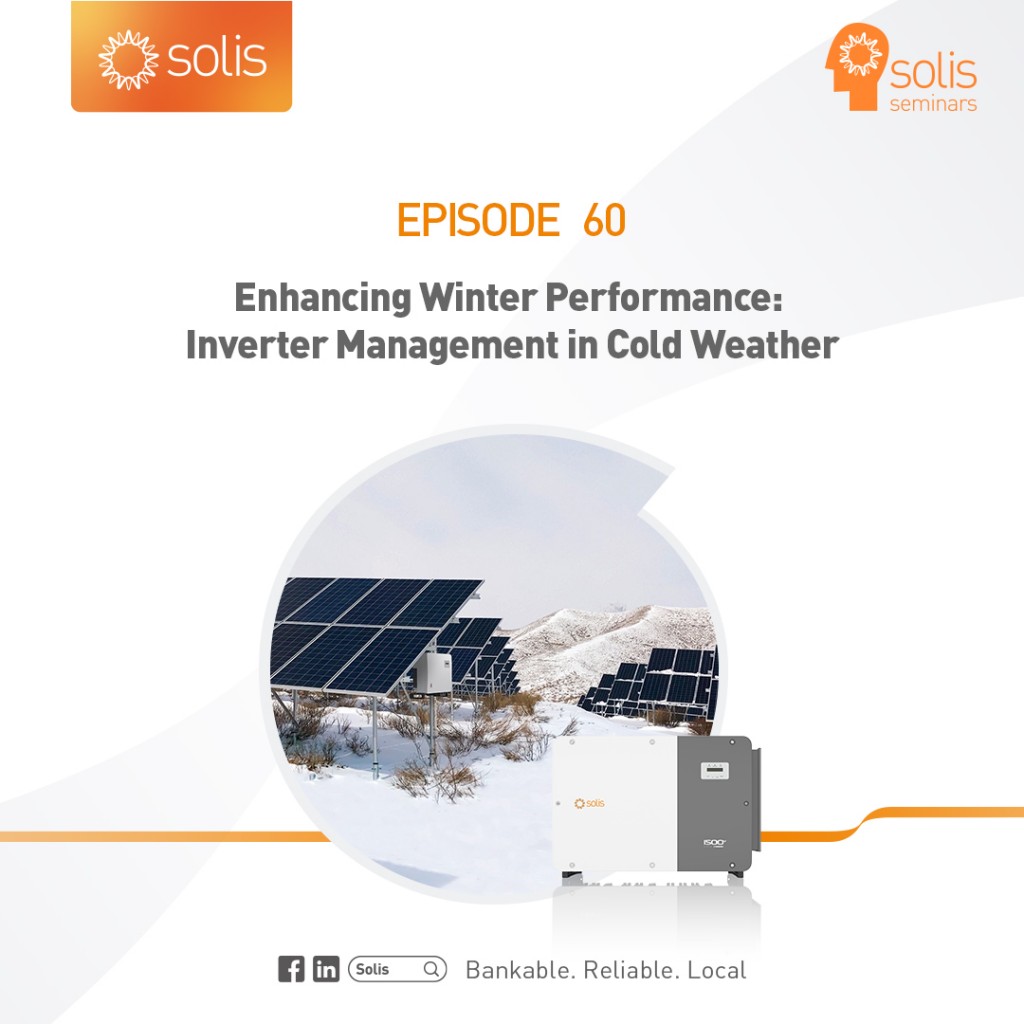Solis Seminar [Episode 56]: Online O&M dispersion analysis
11:17 | 07/09/2023
![Solis Seminar [Episode 56]: Online O&M dispersion analysis Solis Seminar [Episode 56]: Online O&M dispersion analysis](https://vietnamenergy.vn/stores/news_dataimages/Lemy/092023/07/11/0940_Solis_1.jpg?rt=20230907111046) |
What is dispersion analysis?
PV string dispersion analysis is mainly used to evaluate the consistency of PV string power generation and its performance. In practical applications, it reflects the current situation of each DC branch of the inverter. When the current dispersion rate is low, it indicates that the power generation performance of each branch is consistent. If the current dispersion rate is high, it indicates that the branch current deviation is big, meaning the next stage of fixed-point investigation can be carried out.
The formula for calculating the current dispersion of the PV string is as follows:
Dispersion = standard deviation of PV string current/mean value of PV string current *100%
In the PV plant information management platform, the separate rate of PV string current adopts the weighted average of the discretization rate at each moment of the day to evaluate the discretization rate of the whole day. For evaluation of the PV string current dispersion value, it is generally divided into the following five cases:
![Solis Seminar [Episode 56]: Online O&M dispersion analysis Solis Seminar [Episode 56]: Online O&M dispersion analysis](https://vietnamenergy.vn/stores/news_dataimages/Lemy/092023/07/11/0947_Solis_2.jpg?rt=20230907111203) |
Scene application
Discrete rate analysis can be mainly used as a helpful tool to troubleshoot power and current attenuation caused by shadow blockage of PV systems, dirty PV panels, mixed PV panel installations, PV panel damage, etc. The discrete rate analysis of the PV system can be performed in the operation and maintenance center of SolisCloud:
SolisCloud platform → operation and maintenance → discrete rate analysis
![Solis Seminar [Episode 56]: Online O&M dispersion analysis Solis Seminar [Episode 56]: Online O&M dispersion analysis](https://vietnamenergy.vn/stores/news_dataimages/Lemy/092023/07/11/0956_Solis_3.jpg?rt=20230907111249) |
In addition, when using the application tool you need to pay attention to the following problems:
1. It is suggested to exclude abnormal weather scenarios such as cloudy and rainy days when conducting a dispersion analysis.
2. Each inverter connects to more than six PV strings.
3. The operation viewing time is from 10:00 am to 2:00 pm every day, so you can check the day's data after 10:00 am.
4. For branches that are not connected to the PV string, deselect them before performing analysis to avoid interference.
![Solis Seminar [Episode 56]: Online O&M dispersion analysis Solis Seminar [Episode 56]: Online O&M dispersion analysis](https://vietnamenergy.vn/stores/news_dataimages/Lemy/092023/07/11/1004_Solis_4.jpg?rt=20230907111310) |
Shadow occlusion: In the following power station case, there are a total of 9 inverters. Through analysis, the discretization rate of a PV string connected to two inverters is between 10% and 20%. The PV13string and PV7string currents are low, so field investigation is required to determine the cause.
![Solis Seminar [Episode 56]: Online O&M dispersion analysis Solis Seminar [Episode 56]: Online O&M dispersion analysis](https://vietnamenergy.vn/stores/news_dataimages/Lemy/092023/07/11/1045_Solis_5.jpg?rt=20230907111333) |
From field investigation, it can be seen that the PV string corresponding to the two inverters with high discretization rates has an object blocking them, which leads to electrical and distribution losses caused by shade at certain times of the day. The shadow occlusion results in a gap between the running current and the current value of the normal PV string and the corresponding increase in the discretization rate.
![Solis Seminar [Episode 56]: Online O&M dispersion analysis Solis Seminar [Episode 56]: Online O&M dispersion analysis](https://vietnamenergy.vn/stores/news_dataimages/Lemy/092023/07/11/1022_Solis_6.jpg?rt=20230907111401) |
For this kind of occlusion, the customer needs to migrate and transform the PV panel to a more open area.
PV panel defects: In the same power station case, except for one offline inverter, the discretization rate is 6% for the 8 online inverters and 20% for the connected components. Moreover, the multi-day analysis of the power station was continuously checked and was consistently more than 20%. The corresponding string current of the inverter was confirmed to be low.
![Solis Seminar [Episode 56]: Online O&M dispersion analysis Solis Seminar [Episode 56]: Online O&M dispersion analysis](https://vietnamenergy.vn/stores/news_dataimages/Lemy/092023/07/11/1518_Solis_7.jpg?rt=20230907111520) |
There are no occlusions in this scene, so it can be inferred that there may be some problems with a PV panel. Further investigation and analysis of the PV panel are needed to exclude whether the PV panel surface is dirty or if there are other causes of power and current attenuation before determining the fault.
Conclusion
Long-term reliable operation of the power station cannot be separated from the usual operation and maintenance checks. Since the power station is large, the problems are diverse and complex, and the traditional on-site checks are time-consuming and laborious. If various online analysis tools can be used to assist with O&M, you can get more accurate results with less effort. The power plant dispersion analysis tool is easy to operate and accessible for power plant personnel in terms of daily maintenance and troubleshooting.


![Solis Seminar [Episode 55]: Using the piecewise method to check the PV string ground point](https://vietnamenergy.vn/stores/news_dataimages/Lemy/072023/24/10/1349_24.6.jpg?rt=20230724101530?230724103035)





